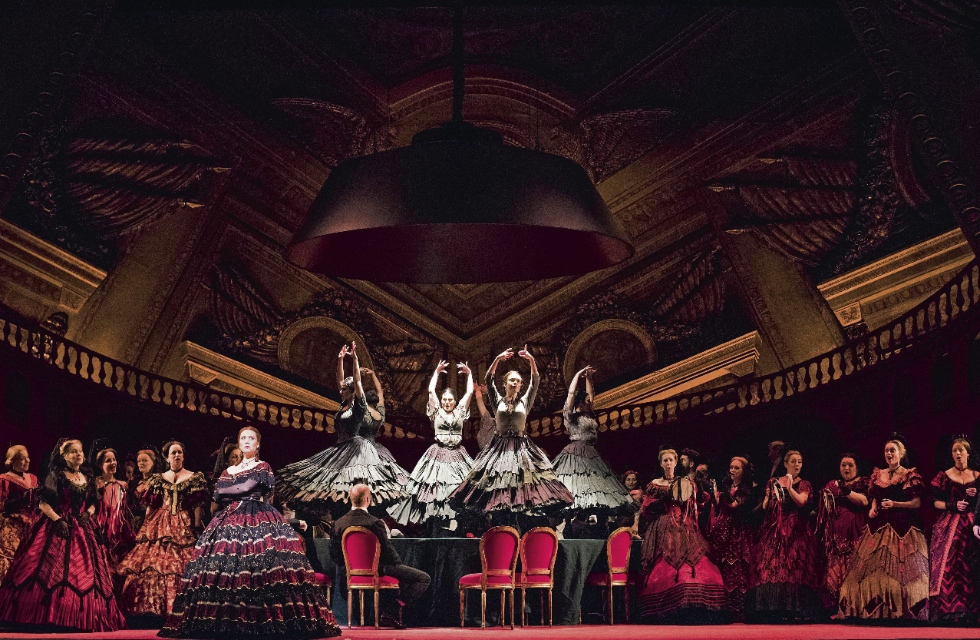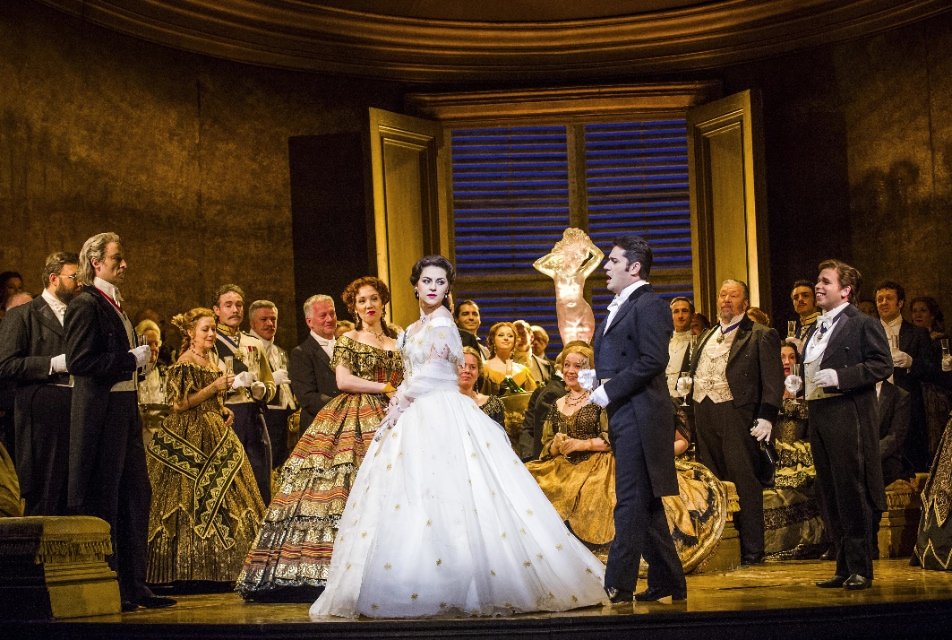The craft behind the costumes at Covent Garden’s Royal Opera House

Bloodied disembodied arms hang from the walls of an otherwise pristine workroom in Essex, where students – their focused expressions lit up by as many Macbook Pros – largely ignore the gruesome debris in their midst. “Oh, that’s Napoleon Blown-apart,” the teacher says. “It’s a project we were working on where we got the students to create a sleeve that’s been in an explosion.”
Her casual tone implies that the creation of puffy sleeves bursting with seeping wounds is all in a day’s work for a costume maker, which is what this determined dozen are training to be. Some will work on grand BBC period dramas, others will make alterations for West End shows, and a couple may even make it into the prestigious Royal Opera House and Royal Ballet in Covent Garden.
Currently, the world-renowned costume department employs 104 people, including four apprentices. During peak periods, this number can be supplemented by up to 40 freelancers, working on between five and eight shows at once.
Designs come in for shows at least a year in advance, usually as a result of a collaboration between the designer and director. Usually, that is; the current revival of Verdi’s La Traviata playing at the ROH came from rather more unusual quarters, according to its designer Bob Crowley.
“It was being conducted at the time by the late, great Sir Georg Solti and he had design approval, which is very unusual for a conductor, but he was such a superstar,” he says. “So I had to visit him at his house in Hampstead and ask, what is it you want from me? And I’ll never forget it, he just said, ‘I want big frrrrocks!’
“I had never done anything in that period before, so I went off and did my research. At the time, it got a lot of criticism for being so traditional, but actually I think it’s one of its strengths now.”
The costumes and set, originally designed for the 1994 production, are just as sumptuous as ever and there’s no doubt the lavish attention piled on its Parisian couture and vivid set design has contributed to the production’s longevity. “I think it’s something you only get to see now at the ROH or perhaps The Met in New York. La Traviata is something that people like to see again and again, so they don’t like it to be too disposable.”
After the final curtain, these costumes and sets used to be cast out to a warehouse in Wales but, since October last year, they’ve been sent to Bob and Tamar Manoukian Costume Centre in Thurrock. Part-funded by the eponymous billionaire businessman and the EU, it houses over 20,000 costumes, wigs, shoes and props from the archives, as well as 120 sets, from 1946 to the present day. In these purse-string tightening times, the move allows the ROH and the Royal Ballet to work in a more sustainable way, recycling costumes without having to ship them over from Wales.
Archiving and conserving historically important items from famous productions or designers can also be done more efficiently here; pieces created by artists from David Hockney to Giorgio Armani are housed among the centre’s rolling stacks.
In the Thurrock workshop three costume-makers work full time creating sturdy, high quality costumes in bulk, largely for the ROH chorus or the corps de ballet. “They’ve got to be strong enough to dance in and to go through the laundry,” says Amanda Hall, head of costume at Thurrock. “We do make them neatly, but there’s a big difference between fashion and costume. They look less finished on the inside, for instance, they won’t be lined and they need to be easy to alter.”

The lavish production of La Traviata designed by Bob Crowley
The centre is also a vital part of the ROH’s efforts to train the costume makers of tomorrow. In September, the first cohort of students embarked on its inaugural costume construction degree in partnership with South Essex College, which is part-written by ROH to include in-demand skills, such as tutu-making, archiving and conservation. Validated by the University of the Arts London, its students come from a dizzying array of backgrounds.
Jacqueline Creasy, for example, has found that a surprising amount of the skills she learnt as an NHS nurse also apply in her new career, especially when it comes to dealing with large commissions. “From the project management skills, all the finance issues, report writing, they’re all adaptable skills. I’d say it’s more the workload; you don’t really feel you can achieve the quality that you want to within the time frame.”
“It was very daunting at first,” adds Emilie Junteau, who has an engineering degree. “Some people had been making costumes as a hobby for decades and I came in not knowing how to sew in a straight line.” But, like many of the students on the course, her passion and knowledge comes from a background in dance. “I always find that when you go to the ballet, the costumes are a massive part of the magic.”
Apart from the obvious prestige attached to the ROH, students are drawn by the access it provides to professionals working in the industry, says course leader Rachel Young. “They’re seeing just how hard and fast these people work from downstairs and the amount of work they get through. It also shows them the diversity of the things they’ll be making. You might be working for the ROH in a studio, but you’ll never be making the same things from week to week.”
Even industry veterans, like Crowley, still come up against unforeseen obstacles, such as the advent of live streaming. The ROH was one of the pioneers when it came to broadcasting opera, and the initiative has been a resounding success, beaming its productions to cinema audiences around the world for a fraction of the cost. This presents new challenges for costume makers who need to make sure their creations are both practical and detailed enough to withstand the scrutiny of high definition cameras.
“It’s terrifying,” says Crowley. “That was never on the horizon when I started designing. I’ve worked in movies and TV where you’re constantly talking about the close-up, but that was never the case in the theatre or the opera until quite recently. I think it’s a brilliant thing, but it makes our eyes just a little bit more self-conscious.”
Back at the Thurrock costume centre, Hall says that while she’s aware her costumes may be seen on camera, the designs are still predominantly for the audience on the night.
“You have to make them strong, particularly with ballet costumes. You might see a few elastic straps on camera that are invisible from the stalls, but the important thing is the costume stays on the dancers and they don’t have to think about it.” Hall adds that the quality demanded of the ROH is so high that her work still has to be extraordinarily detailed, whether it’s destined for the cameras or not.
Perfectionism is a common trait shared by costume makers, from the trainee cautiously dotting blood spatter on a satin sleeve right up to multiple Tony Award winners like Crowley. “People ask me, ‘why do you go to so much detail on your costumes? How are people going to see it from across the orchestra pit?’ But I’m convinced you do see it and an audience feels it. Anything less would just be patronising.”
La Traviata runs at the Royal Opera House, Covent Garden, until 19 March